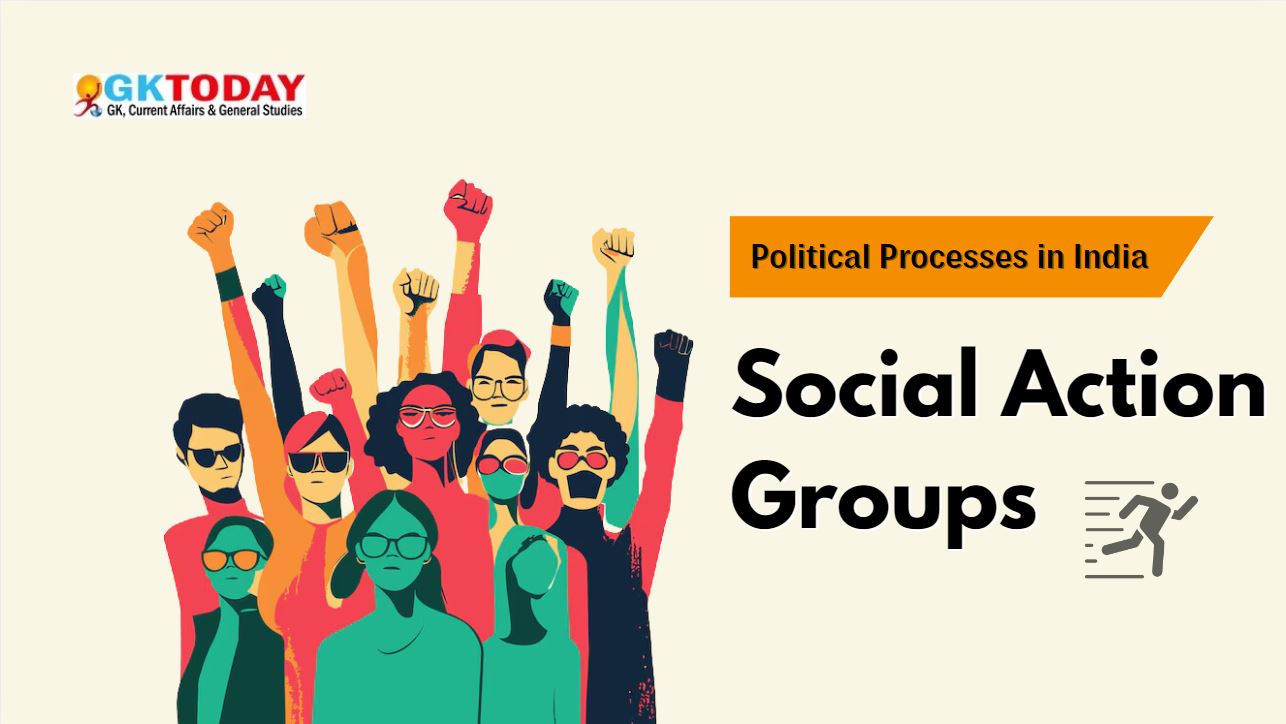Social Action Groups in India – A Study Guide for UGC-NTA NET Political Science
Social action groups play important role in shaping political processes in India. They advocate for social change, particularly for marginalized communities. These groups address various social issues and work towards empowering individuals and communities.
Definition of Social Action Groups
Social action groups are organisations dedicated to promoting social change. They focus on addressing issues faced by marginalised communities. Their work often involves advocating for rights and improving living conditions. Examples include groups that support women’s rights, Dalit rights, and environmental justice.
Characteristics of Social Action Groups
Social action groups share several key characteristics:
- Grassroots Mobilisation: They engage local communities in activism. This approach ensures that the voices of the affected populations are heard.
- Advocacy: These groups lobby for policy changes and raise awareness about social issues. They often organise campaigns to educate the public.
- Non-partisan: Most social action groups operate independently of political parties. However, they can influence political processes .
- Diverse Membership: Members come from various backgrounds, including activists, professionals, and community members. This diversity enriches their perspectives and strategies.
Objectives of Social Action Groups
The primary objectives of social action groups include:
- Empowerment: They aim to empower marginalised sections of society, such as women, Dalits, and Adivasis.
- Promotion of Human Rights: Advocacy for social justice and human rights is central to their mission.
- Environmental Protection: Many groups focus on sustainable development and environmental issues.
- Policy Reforms: They advocate for reforms in education, health, and labour rights.
Types of Social Action Groups
Social action groups can be categorised into different types:
- Grassroots Organisations: These are local groups addressing community-specific issues.
- Non-Governmental Organisations (NGOs): Larger organisations with specific missions and funding sources.
- Advocacy Groups: Focused on lobbying for specific legislative changes.
- Social Movements: Broader coalitions that include various organisations and individuals united by common goals.
Role of Social Action Groups in India
Social action groups influence India’s political landscape:
- Policy Influence: They contribute to the formulation and implementation of important policies, such as the Right to Information Act and the Mahatma Gandhi National Rural Employment Guarantee Act.
- Awareness Raising: These groups educate the public about social issues, rights, and available resources.
- Legal Aid and Support: They provide legal assistance to marginalised communities, helping them navigate the justice system.
- Research and Documentation: Conducting studies, they highlight social issues and inform policy discussions.
Challenges Faced by Social Action Groups
Despite their important work, social action groups face several challenges:
- Governmental Restrictions: Increasing scrutiny and regulation of NGOs can hinder their operations.
- Funding Issues: Dependence on external funding sources may limit their autonomy and influence.
- Internal Conflicts: Divergent views within groups can lead to fragmentation and inefficiency.
- Public Perception: Misunderstandings about their role and objectives can affect their credibility and support.
Notable Social Action Groups in India
Several social action groups have made impact in India:
- Bharat Gyan Vigyan Samiti (BGVS): Focuses on using science and technology for rural development.
- Self-Employed Women’s Association (SEWA): Advocates for the rights of women workers in the informal sector.
- National Alliance of People’s Movements (NAPM): A coalition advocating for social justice and environmental issues.
- Amnesty International India: Works on human rights issues and advocacy at various levels.
Impact of Social Action Groups
The impact of social action groups is deep:
- Mobilisation of Public Opinion: They raise awareness and mobilise public opinion on critical social issues.
- Successful Campaigns: Many campaigns have led to legislative changes, improving the lives of many.
- Strengthening Civil Society: They contribute to the strengthening of civil society and democratic processes.
- Networking: They create networks for collaboration among various groups, enhancing collective impact.
Case Studies
Several case studies illustrate the effectiveness of social action groups:
- Narmada Bachao Andolan: This movement opposed the construction of dams on the Narmada River, denoting issues of displacement and environmental concerns.
- Right to Information Movement: Grassroots efforts led to the enactment of the RTI Act in 2005, empowering citizens to seek information.
Future Trends
The future of social action groups in India shows promising trends:
- Technology Use: Increasing use of technology and social media enhances mobilization efforts.
- Collaboration: Greater collaboration between local and international organisations is anticipated.
- Focus on Intersectionality: Social justice movements are increasingly recognising the importance of intersectionality.





